Cube and cuboid are three-dimensional solid figures with similar shapes. They have six faces, eight vertices, and twelve edges. The area and volume of the cube and cuboid are different from each other. Examples of cube and cuboids are a wooden boxes, dice, aquariums, matchbox, etc. All these objects are rectangular boxes or square boxes so they are similar to cuboid and cube. All the students of grade 9 can learn many things about the cube and cuboid from here with examples.
Cube and Cuboid – Definitions
Cuboid: A cuboid is a strong with six rectangular plane countenances, for instance, a block or a matchbox. Each of these is comprised of six plane faces which are rectangular. Recall that since a square is a unique instance of a rectangle, a cuboid might have square faces as well.

Cube: A cube is a three dimensional figure with all equal sizes. It has six faces, eight vertices and twelve edges. It has x-axis, y-axis and z-axis and three dimensions length, breadth and height.
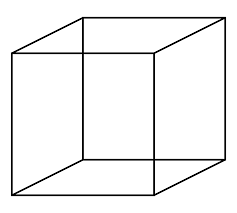
Volume and surface area of cube and cuboid
The volume of cuboid and cube is nothing but how much capacity that a container can hold. The volume of the cube and cuboid can be calculated by multiplying all the dimensions of the figure. And the surface are of the cuboid and cube is nothing but the amount of space occupied by the solid figures. We can calculate the surface area of the cube and cuboid in two types lateral surface area and total surface area.
Difference Between Cube and Cuboid
The difference between the cube and cuboid is discussed in this section.
1. The shape of the cube and cuboid are similar but the sizes of them are different.
2. Cuboid is rectangular in shape and cube is square in shape.
3. The diagonals of the cube are equal whereas the cuboid has equal diagonal only for the parallel sides.
Volume of Cube and Cuboid Formula
- Volume of the cuboid (V) = length × breadth × height
- Volume of a cube = (side)³
Surface Area of Cube and Cuboid Formula
- Curved surface area of cuboid = 2h(l + b)
- Total surface area of cuboid is 2 (lb + bh + hl)
- Surface area of a cube = 6(side)²
Also, Read:
Finding the Volume and Surface Area of a Cube and Cuboid Examples
Example 1.
Three identical cubes of side 2cm are joined end to end. Find the total surface area and lateral surface area of the new resulting cuboid.
Solution:
Given that
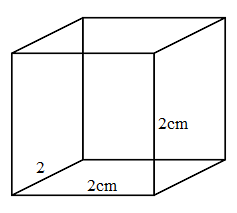
Side of three identical cubes = 2 cm
Curved surface area of resulting cuboid = 2h(l + b)
length of resulting cuboid = 2 + 2 + 2 = 6 cm
breadth of cuboid = 2 cm and height of cuboid = 2 cm
= 2 (2) (2 + 2)
= 4(4)
= 16 cm²
Total surface area 2 (lb + bh + hl)
= 2[6(2) + 2(2) + 2(6)]
= 2 [12 + 4 + 12]
= 2(28)
= 56 cm²
Thus the total surface area and lateral surface area of the new resulting cuboid are 16 cm² and 56 cm²
Example 2.
Find the volume and total surface area of the cuboid with length 14m, height 10m, and breadth 12m?
Solution:
Given that
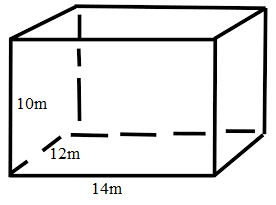
Length = 14 cm
Breadth = 12 cm
Height = 10 cm
We know that
The volume of cuboid (V) = length × breadth × height
Volume of cuboid = (14 × 12 × 10) m³ = 1680 m³
Total surface area of cuboid = 2(lb + bh + hl)
= (14 × 12 + 12 × 10 + 10 × 14)
= (168 + 120 + 140)
= 428 cm²
Thus the volume and total surface area of the cuboid are 1680 m³ and 428 cm²
Example 3.
If the side of a cube measures 7 cm, find it volume and surface area.
Solution:
Given that
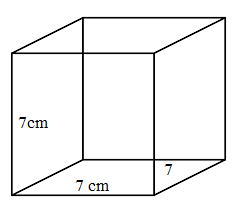
Side b= 7 cm
volume of a cube = (side)³
= 7³ cm³
= 343 cm³
Surface area of a cube = 6(side)²
= 6 × 7² cm²
= 6 × 49 cm²
= 294 cm²
Thus the volume and surface area of a cube is 343 cm³ and 294 cm²
Example 4.
Find the volume and total surface area of the cuboid with length 24m, height 20m, and breadth 22m?
Solution:
Given that
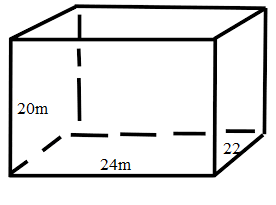
Length = 24 cm
Breadth = 22 cm
Height = 20 cm
We know that
The volume of cuboid (V) = length × breadth × height
Volume of cuboid = (24 × 22 ×20)m³ = 10560 m³
Total surface area of cuboid = 2(lb + bh + hl)
= (24 × 22 + 22 × 20 + 20 × 24)
= (528 + 440 + 480)
= 1448 cm²
Thus the volume and total surface area of the cuboid 10560 m³ and 1448 cm²
Example 5.
If the side of a cube measures 16 cm, find its volume and surface area.
Solution:
Given that
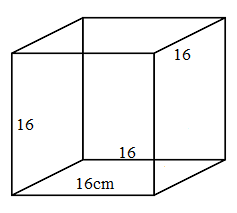
Side = 16 cm
volume of a cube = (side)³
= 16³ cm³
= 4096 cm³
Surface area of a cube = 6(side)²
= 6 × 16² cm²
= 1536 cm²
Thus the volume and surface area 4096 cm³ and 1536 cm²
FAQs on Surface Area and Volume of a Cube and Cuboid
1. What is the relation between LSA and TSA of a cuboid?
The total surface area of a Cuboid is equal to the total of the areas of its six rectangular appearances and the Lateral surface area is equal to the entirety of the areas of the four horizontal surfaces of Cuboid.
2. How do you find the volume and surface area of a cuboid?
Volume of cuboid (V) = length × breadth × height = Base area × height
3. What are cube and cuboid?
Cubes can be called special cuboids, as a cube is a 3D square-shaped figure with all sides i.e. length, breadth, and height equal to each other. Whereas a cuboid is a 3D rectangular figure with all sides not equal to each other.